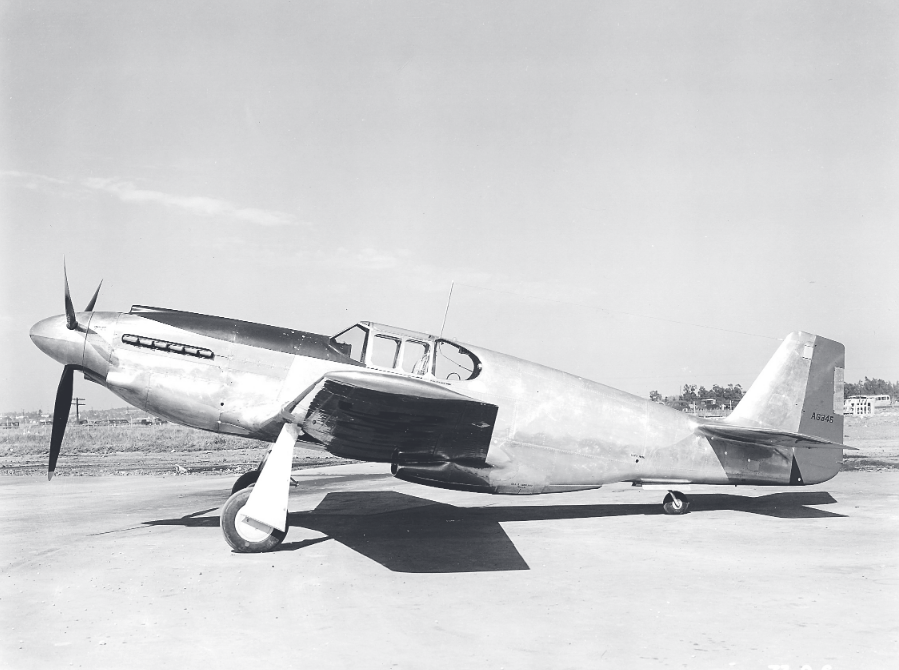
 23 April 1941: At North American Aviation’s Inglewood, California factory, test pilot Louis Sanford Wait takes the very first production Mustang Mk.I, AG345, (c/n 73-3098) for its first flight.
23 April 1941: At North American Aviation’s Inglewood, California factory, test pilot Louis Sanford Wait takes the very first production Mustang Mk.I, AG345, (c/n 73-3098) for its first flight.
The Royal Air Force had contracted with NAA to design and build a new fighter with a 1,200 horsepower Allison V-1710 supercharged 12-cylinder engine. The first order from the British Purchasing Commission was for 320 airplanes, and a second order for another 300 soon followed.
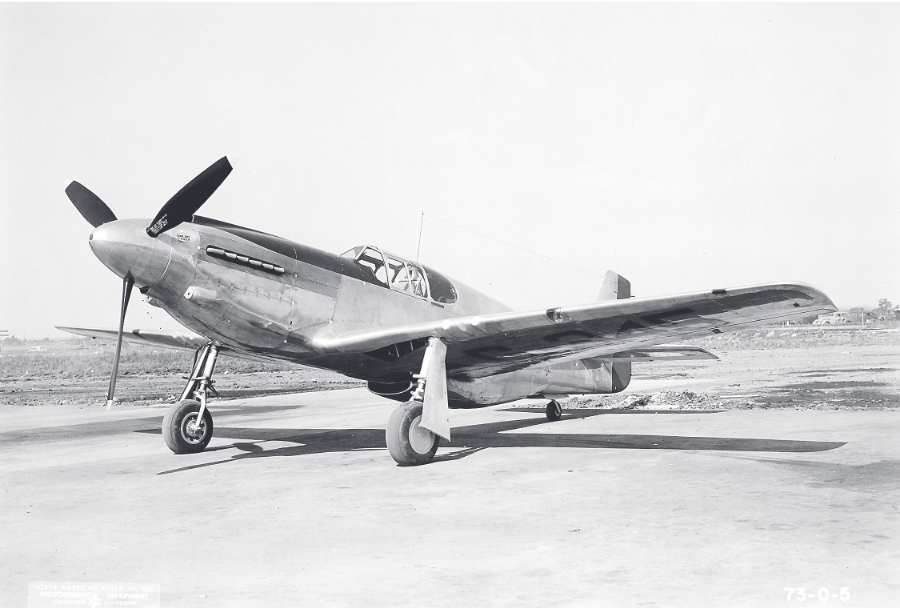
The Mustang Mk.I (NAA Model NA-73) was a single-place, single-engine fighter primarily of metal construction with fabric control surfaces. It was 32 feet, 3 inches (9.830 meters) long with a wingspan of 37 feet, 5/16-inches (11.373 meters) and height of 12 feet, 2½ inches (3.721 meters). The airplane’s empty weight was 6,280 pounds (2,849 kilograms) and loaded weight was 8,400 pounds (3,810 kilograms).
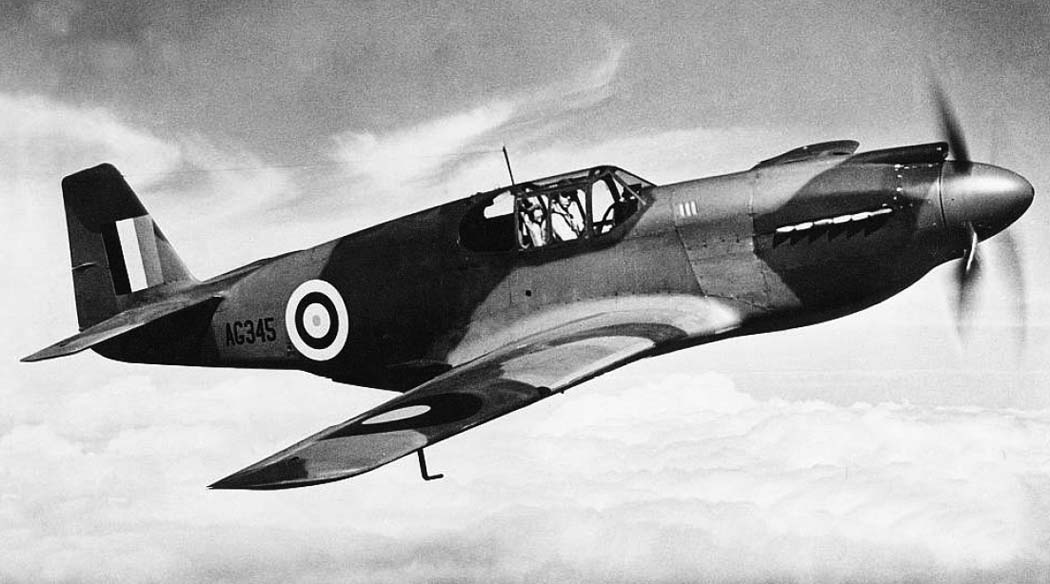
 The Mustang Mk.I was powered by a liquid-cooled, supercharged 1,710.597-cubic-inch-displacement (28.032 liter) Allison Engineering Company V-1710-F3R (V-1710-39) single overhead cam (SOHC) 60° V-12 engine with a compression ratio of 6.65:1. The -F3R had a Maximum Continuous Power rating of 880 horsepower at 2,600 r.p.m. at Sea level, and 1,000 horsepower at 11,000 feet (3,353 meters). It was rated at 1,150 horsepower at 3,000 r.p.m. for Take Off and Military Power. The Allison V-12 drove a 10 foot, 9 inch (3.277 meter) diameter, three-bladed Curtiss Electric constant-speed propeller through a 2.00:1 gear reduction. The V-1710-F3R was 7 feet, 4.38 inches (2.245 meters) long, 3 feet, 0.54 inches (0.928 meters) high, and 2 feet, 5.29 inches (0.734 meters) wide. It weighed 1,310 pounds (594 kilograms).
The Mustang Mk.I was powered by a liquid-cooled, supercharged 1,710.597-cubic-inch-displacement (28.032 liter) Allison Engineering Company V-1710-F3R (V-1710-39) single overhead cam (SOHC) 60° V-12 engine with a compression ratio of 6.65:1. The -F3R had a Maximum Continuous Power rating of 880 horsepower at 2,600 r.p.m. at Sea level, and 1,000 horsepower at 11,000 feet (3,353 meters). It was rated at 1,150 horsepower at 3,000 r.p.m. for Take Off and Military Power. The Allison V-12 drove a 10 foot, 9 inch (3.277 meter) diameter, three-bladed Curtiss Electric constant-speed propeller through a 2.00:1 gear reduction. The V-1710-F3R was 7 feet, 4.38 inches (2.245 meters) long, 3 feet, 0.54 inches (0.928 meters) high, and 2 feet, 5.29 inches (0.734 meters) wide. It weighed 1,310 pounds (594 kilograms).
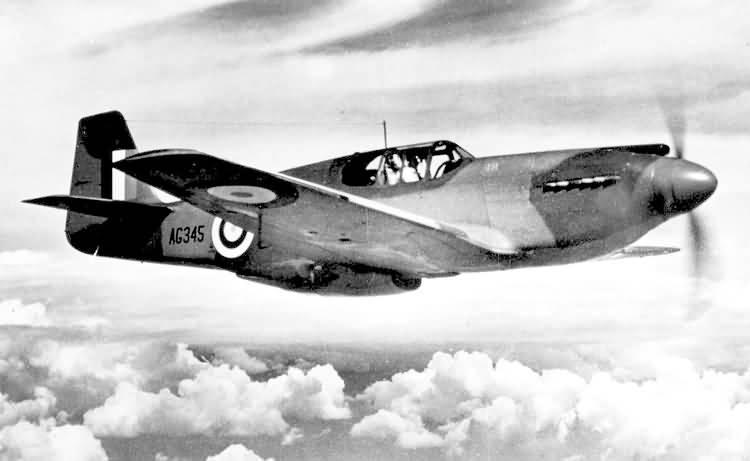
The Mustang Mk.I had a cruise speed of 311 miles per hour (500.5 kilometers per hour) at 75% power, and a maximum speed of 384 miles per hour (618 kilometers per hour) at 19,000 feet (5,791 meters). The airplane could reach 20,000 feet (6,096 meters) in 8.80 minutes. The service ceiling was 32,000 feet (9,754 meters) and its range was 640 miles (1,030 kilometers).
The Mk.I was equipped with four Browning AN-M2 .50-caliber machine guns, with one in each wing and two mounted in the nose under the engine. Four Browning .303 Mk.II machine guns were also installed, with two in each wing.
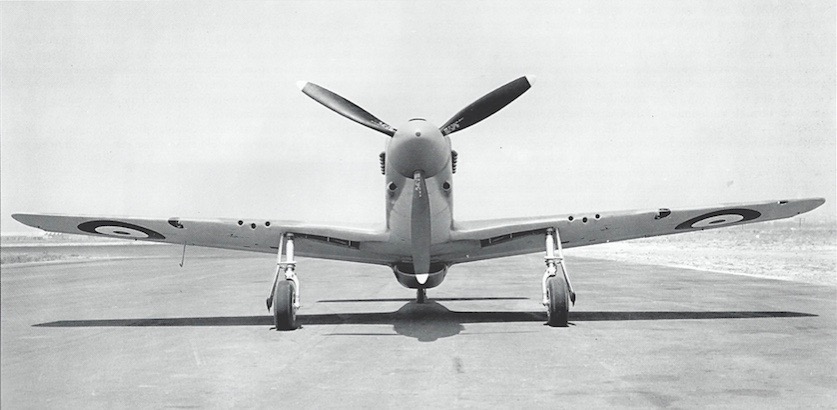
The Mk.I was 30 m.p.h. (48 kilometers per hour) faster than its contemporary, the Curtiss P-40 Warhawk, though both used the same engine. Below 15,000 feet (4,572 meters), the Mustang was also 30–35 m.p.h (48–56 kilometers per hour) faster than a Supermarine Spitfire, which had the more powerful Roll-Royce Merlin V-12.
Two Mustang Mk.Is were taken from the first RAF production order and sent to Wright Field for testing by the U.S. Army Air Force. These airplanes, assigned serial numbers 41-038 and 41-039, were designated XP-51. They would be developed into the legendary P-51 Mustang. In production from 1941 to 1945, a total of 16,766 Mustangs of all variants were built.
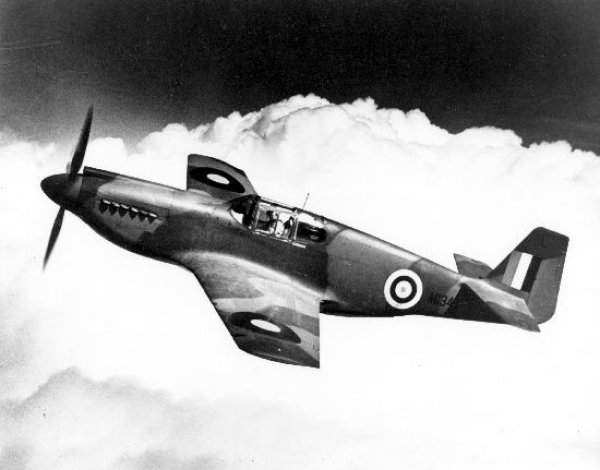
Louis Sanford Wait was born 28 June 1908 at Superior, Nebraska. He was the first of two children of Dr. James Enos Wait, a dentist, and Alice Caroline Harrington Wait.
Wait enlisted in the Air Corps, United States Army, as an aviation cadet, in 1929. He trained as a pilot at March Field, near Riverside, California, and at Kelly Field, Bexar, Texas. Wait graduated 27 June 1930 and received his pilot’s wings and a commission as a second lieutenant, Air Corps Reserve. (O274973) Lieutenant Wait trained as an attack pilot and was assigned to Fort Crockett, Galveston, Texas.
From 1932 to 1935, Wait, having been released from active duty, was employed as a test pilot for the Boeing Airplane Company, Seattle, Washington.
By 1937, Lieutenant Wait was assigned to Headquarters Squadron, 2nd Bombardment Group at Langley Field, Virginia, under the command of Brigadier General Robert Olds. While on 18 days leave, on 3 December 1937, Second Lieutenant Wait married Mrs. Elsie O. Callow (née Elsie Oliver) at Amityville, New York.
Wait married Mrs. Mary Elizabeth Croxen (née Mary Elizabeth Musser), 2 November 1944, in Los Angeles, California.
In August 1946, Louis Wait entered a P-51C Mustang, NX28388, in the Bendix Trophy Race. The airplane had been purchased by Jackie Cochran. She flew it in the race and finished in second place behind Paul Mantz.
In 1951, Wait was appointed general administrator of a new North American Aviation plant at the Fresno Air Terminal, Fresno, California. The plant, which employed about 400 people, manufactured and repaired parts for the T-6/SNJ Texan flight trainers, and performed modifications to F-86 Sabre jet fighters.
Louis Sanford Wait died 3 July 1963, at the age of 55 years.
© 2019, Bryan R. Swopes
Interesting how we have one shot of the aircraft in paint, with guns, but in all the air to air shots there are no guns. Was this a little wartime photo retouching, or had all the armament been removed (including the gun ports in the cowling) at some point?
I’m going to go with the retouching scenario. We KNOW that it had guns, but the in-flight photos don’t show any, including gun ports in the wings.
April 23rd: How often does this happen? There is a partial picture of the left side a P-51 in flight in the mast head of the page, then the first picture on the page is of the left side of a (British) Mustang parked on a ramp. It’s not newsworthy – just eye-worthy.
The masthead photograph is of the North American Aviation NA-73X, NX19998, the prototype of the Mustang. It has not been changed in over ten years. The photographs in the article are of the first production NAA Mustang Mk.I, AG345. The two airplanes are similar, though not identical. For example, the Mustang Mk.I is fully armed. That article was last up dated in 2019.
Some of the RAF Mustang Mk1 version were fitted with four Hispano 20mm cannon. The high speed of the P51 was said to be due to the laminar flow wing. Later it was found not to be the case, the Chief Engineer at North American, John Leland Attwood, later said that the speed advantage was due to the very low drag cooling system, that actually gave positive thrust at high speed, based on the principles originated by Meredith at Farnborough before the war. An excellent book has recently been published on this entitled “Spitfire, Mustang and the “Meredith Effect”, by Peter Spring. Although they looked different, the Spitfire and Mustang were identical in all key dimensions and there had been an attempt to get benefit from the Meredith effect in the design of the Spitfire radiators, but their position under the wings meant that they were affected by the boundary layer effect and never achieved the potential benefit. The buried radiator and variable inlet/exit design on the P51was highly successful and worked like a subsonic ramjet in boosting the speed performance. It also meant that high cruising speeds could be achieved at lower power, which contributed to long range.